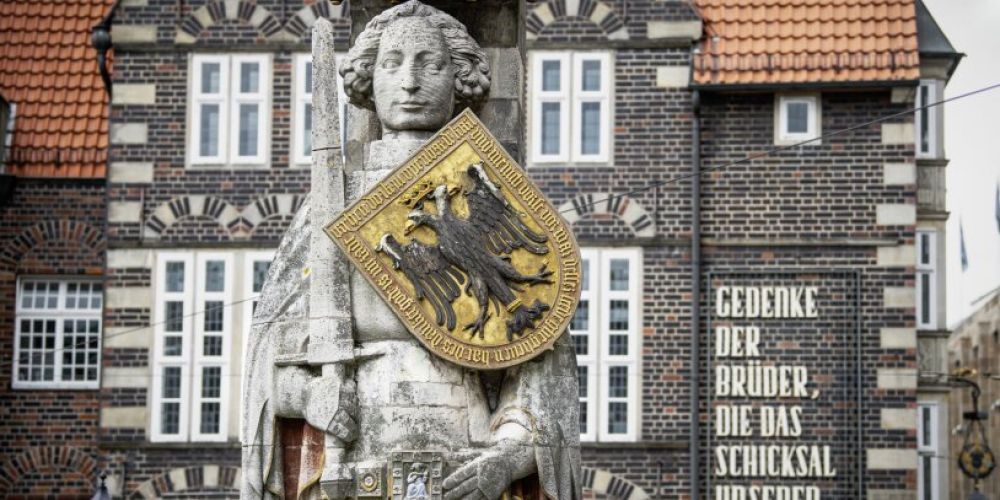

Nestled in the historic market square of Bremen, Germany, stands the Bremen Roland Statue, an iconic emblem of the city and a significant figure in the history of urban rights and freedom. Erected in 1404, this impressive statue commemorates Roland, the paladin of Charlemagne, who became a legendary figure symbolizing the rights and privileges of a free community.
The Roland Statue has been a beacon of Bremen's independence for centuries. Throughout medieval times, the presence of a Roland statue in a town square represented the autonomy of the city, demonstrating that the city had market rights and was not under the direct rule of the regional lord. Bremen's Roland is adorned with a shield bearing the two-headed Imperial eagle, reflecting the city's imperial liberties.
Recognized for its cultural significance, the Roland Statue, along with Bremen's Town Hall, was inscribed as a UNESCO World Heritage site in 2004. This has augmented the statue's role not only as a symbol of liberty but also as a crucial piece of world cultural heritage, drawing in visitors interested in history and architecture.
The Bremen Roland Statue has been a magnet for tourists since its installation. Over time, as travel became more accessible, the city of Bremen transformed into a desirable destination for travelers from all over the world. The history of tourism in Bremen intertwines with the history of the Roland itself, as it has consistently been a centerpiece in city tours and cultural exhibitions.
As one of Bremen's most significant landmarks, the Roland Statue plays a pivotal role in the local tourism industry. It is a popular stop for walking tours, historical reenactments, and cultural events. Visitors often enjoy taking photographs with the legendary statue, and it has become synonymous with the identity of Bremen itself.
In recent years, there has been a growing trend in experiential and educational tourism. People are increasingly seeking authentic experiences that offer deeper insights into the historical and cultural contexts of landmarks like the Bremen Roland. This has led to the development of interactive tours and augmented reality applications that bring the statue's rich history to life for visitors.
Those interested in visiting the statue will find that it is easily accessible by public transport and is surrounded by other historical attractions, including the Bremen Town Hall and St. Peter's Cathedral. The best times to visit are during spring and summer when the weather is pleasant for outdoor exploration. Additionally, visiting during one of the city's many festivals can provide an especially vibrant experience.
Whether you are a history enthusiast, architecture admirer, or simply in search of a unique cultural experience, the Bremen Roland Statue stands as a testament to the liberties that shaped the Free Hanseatic City of Bremen and continues to inspire those who gaze upon it.